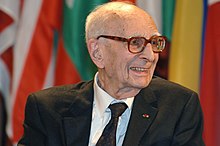Intrapreneurial Bricolage: Difference between revisions
Bbarmadillo (talk | contribs) added Category:Neologisms using HotCat |
Alter: doi. Add: isbn, series, volume. Removed parameters. | You can use this tool yourself. Report bugs here. |
||
| Line 6: | Line 6: | ||
== Hidden Assets == |
== Hidden Assets == |
||
One of the key principles of IB is finding utility in resources commonly overlooked.<ref name="Mahajan-Technological">{{cite journal |last1=Mahajan |first1=Aarti |last2=Clarysse |first2=Bart |title=Technological Innovation and Resource Bricolage in Firms: The Role of Open Source Software |journal=International Federation for Information Processing |date=2013 |pages=1–17 |doi=10.1007/978-3-642-38928-3_1 |
One of the key principles of IB is finding utility in resources commonly overlooked.<ref name="Mahajan-Technological">{{cite journal |last1=Mahajan |first1=Aarti |last2=Clarysse |first2=Bart |title=Technological Innovation and Resource Bricolage in Firms: The Role of Open Source Software |journal=International Federation for Information Processing |volume=404 |date=2013 |pages=1–17 |doi=10.1007/978-3-642-38928-3_1 |series=IFIP Advances in Information and Communication Technology |isbn=978-3-642-38927-6 }}</ref> These resources can be divided into tangible and intangible assets. Often these assets are overlooked because they are obscured, dispersed or underutilized.<ref name="Witell-A-Bricolage">{{cite journal |last1=Witell |first1=Lars |last2=Gebauer |first2=Heiko |last3=Jaakkola |first3=Elina |last4=Hammedi |first4=Wafa |last5=Patricio |first5=Lia |last6=Perks |first6=Helen |title=A bricolage perspective on service innovation |journal=Journal of Business Research |date=2017 |volume=79 |url=https://ac-els-cdn-com.ezaccess.libraries.psu.edu/S0148296317301091/1-s2.0-S0148296317301091-main.pdf?_tid=b4a4b439-d9d6-4617-8b33-f929511ae922&acdnat=1530466967_448f38a7e1a7722e2059c6103706872c |accessdate=1 July 2018}}</ref> Some examples of hidden assets include: |
||
* Personal Knowledge or Skills |
* Personal Knowledge or Skills |
||
Revision as of 23:35, 18 May 2019
Intrapreneurial Bricolage (IB) is the pursuit of entrepreneurial endeavors, operating within a larger organization using only limited, available resources.[1] The term combines the two concepts of intrapreneurship and bricolage. Intrapreneurship uses principles and strategies from the discipline of entrepreneurship and applies them within the confines of an organization rather than initiating new ones. Borrow from the French word for "makeshift job", bricolage is a type of art using whatever media is at hand. In the context of intrapreneurial bricolage, intrapreneurs find innovative ways to work with a scarcity of resources.
Background

In The Savage Mind, French anthropologist Claude Lévi-Strauss discussed 'bricolage' as having roots in the French idea of a worker who uses his hands inventively to accomplish what other workers cannot. In his description of this jack-of-all-trades, Lévi-Strauss explains that there is no requirement for skills and tools to be highly specialized. Instead, this 'bricoleur' is flexible enough to be able to use minimal resources for multiple applications.[2]
Hidden Assets
One of the key principles of IB is finding utility in resources commonly overlooked.[3] These resources can be divided into tangible and intangible assets. Often these assets are overlooked because they are obscured, dispersed or underutilized.[4] Some examples of hidden assets include:
- Personal Knowledge or Skills
- Networking
- Germinal Financing
- Information Technology
Assessment
Measuring the success of IB initiatives is an essential part of the concept. One deliverable for IB is the generation of new products or services during specific times of scarcity in the organization's life cycle. Two such stages are during an organization's creation and also during times of growth.[5]
References
- ^ Halme, Minna; Lindeman, Sara; Linna, Paula (June 2012). "Innovation for Inclusive Business: Intrapreneurial Bricolage in Multinational Corporations". Journal of Management Studies. 49 (4): 743–784. doi:10.1111/j.1467-6486.2012.01045.x.
- ^ Lévi-Strauss, Claude (2000). The savage mind (PDF) ([10. print.]. ed.). Chicago: Univ. of Chicago Press. p. 10. ISBN 978-0226474847. Retrieved 2 July 2018.
- ^ Mahajan, Aarti; Clarysse, Bart (2013). "Technological Innovation and Resource Bricolage in Firms: The Role of Open Source Software". International Federation for Information Processing. IFIP Advances in Information and Communication Technology. 404: 1–17. doi:10.1007/978-3-642-38928-3_1. ISBN 978-3-642-38927-6.
- ^ Witell, Lars; Gebauer, Heiko; Jaakkola, Elina; Hammedi, Wafa; Patricio, Lia; Perks, Helen (2017). "A bricolage perspective on service innovation" (PDF). Journal of Business Research. 79. Retrieved 1 July 2018.
- ^ Chinyoka, S. V. (20 November 2017). "Bricolage: A State of Entrepreneurial Excellence". Asian Business Research. 2 (3): 46–52. doi:10.20849/abr.v2i3.223. ISSN 2424-8479.
